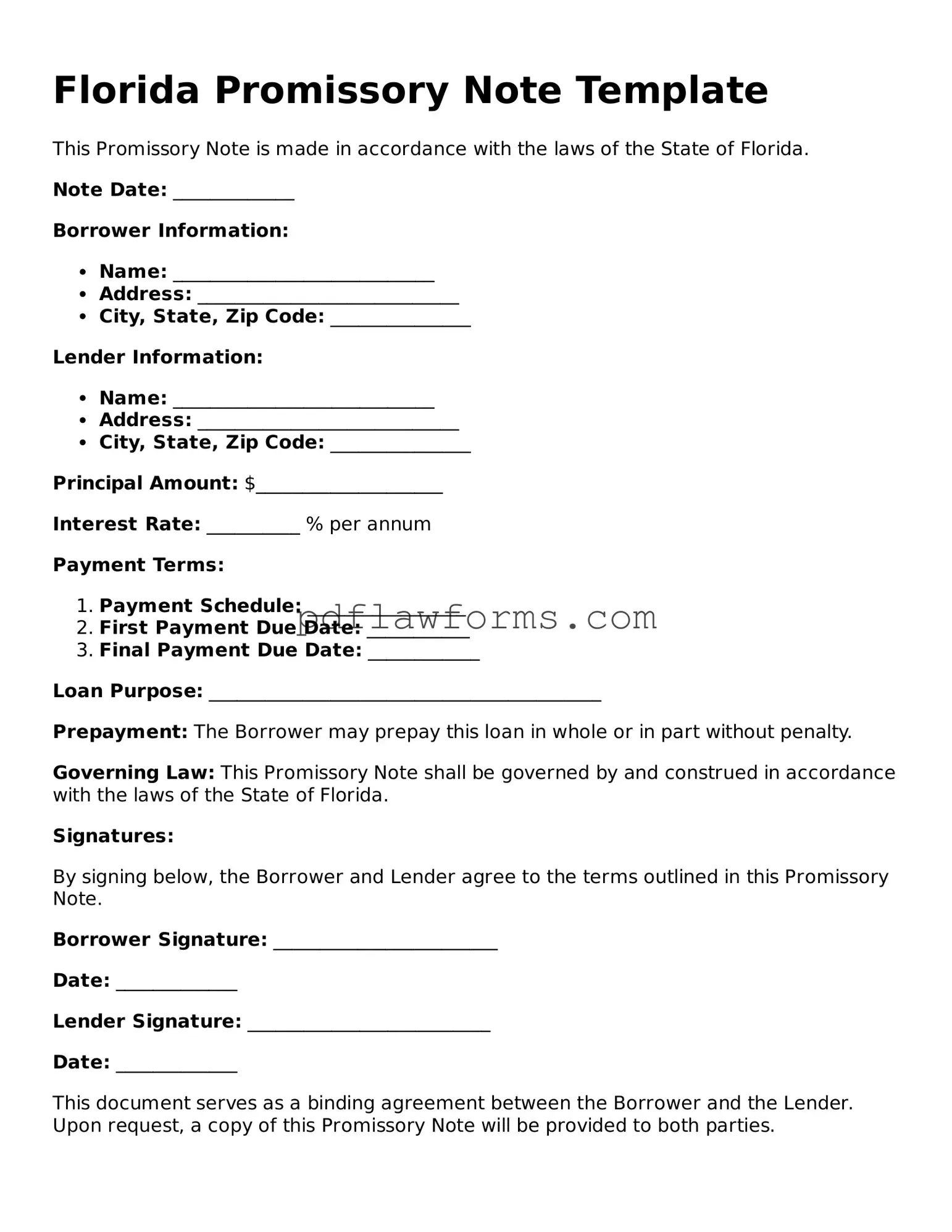Promissory Note Form for the State of Florida
A Florida Promissory Note is a written promise to pay a specified amount of money to a designated person or entity at a future date. This document outlines the terms of the loan, including interest rates and repayment schedules, providing clarity and protection for both the lender and borrower. To get started, fill out the form by clicking the button below.
Make My Document Online
